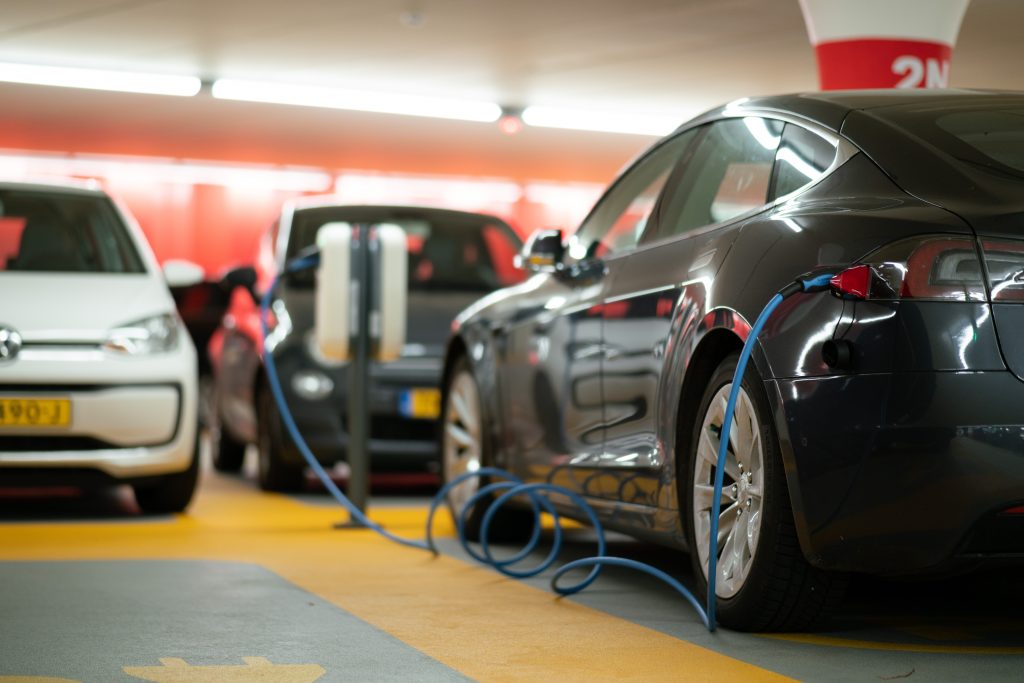Last updated on April 23rd, 2021
Following extensive testing of Google’s self-driving cars in California, Florida, and Nevada, test models are now being driven (or, more accurately, driving themselves) across cities in the UK.
The advent of driver fewer vehicles is an idea that brings up many talking points; the safety of entrusting a machine with our lives, whether the joy of driving will be lost, the implications on traffic and congestion, and their cost efficiency. Interestingly, experts are also predicting that the automated vehicles will have a positive effect on the levels of emissions produced by road transport.
The idea
Whilst the integration of ‘intelligent’ technologies in automobiles has become increasingly commonplace, for example with cruise control and parking assist systems, it is only in the last decade that the somewhat science-fictional idea of a vehicle that is fully automated has become a possible reality. Google has predicted that their self-driving cars could be released in as few as two years time.
Implementation and environmental effects
With such a potentially revolutionary change in our transportation methods, it is important to consider the effects on the environment. Official statistics from the EPA show that over a quarter of greenhouse gases in the USA in 2012 were from transportation; more than were emitted across the whole industry sector. If the new vehicles prove to be popular, our driving patterns could change; experts of both the car industry and environmental issues, agree that the effects could be extremely positive. The main selling point, some claim, is that the cars could be electric as standard.
Electric dreams
High hopes have been pinned on the lower emissions and running costs promised with electric vehicles. Compared to traditional combustion engines, the battery-powered motors are far more efficient to run, wasting much less fuel and appearing to produce far fewer emissions.
This, however, depends on the efficiency of the production of electricity, which varies wildly from country to country; in countries such as India and South Africa, the emissions from producing the electricity used to power the vehicles is taken largely from unsustainable, carbon-heavy sources. So while the vehicle may take less power to run than a combustion engine, the costly carbon emissions may be hidden in energy production. Also worth considering is the impact of manufacturing the vehicles themselves. These often ignored factors lead to an inconsistent view of the emissions produced by electric cars.
Changing habits
On the other hand, the smaller size of the engine in electric cars, and the development of lighter battery packs mean that emissions could be reduced by using more of these compact vehicles. The drawback of this has been hailed as having a shorter drive time before running out of juice, but there are a few arguments to the contrary.
Self-driving cars are far more accessible to people who can’t drive, or even those who are not car owners; current car sharing schemes, often combined with phone apps, allow people to find an available hire car near them to use for a single trip, and drop off in numerous possible locations. Were driverless vehicles to be used in this manner, they would be mostly used for short cross-city trips, and therefore their shorter drive time would not be as impeding.
Contrary to this, if driving became much more easy and accessible, and the vehicles themselves more comfortable and social to use, without the need for forward-facing seats, it is foreseeable that fewer people would prefer to use public transport. It is even more important, therefore, that the sustainability of electricity and vehicle production is optimized at every stage.
The drive of your life
There are several bonuses of a self-driving vehicle, however, that appear to be solely beneficial in terms of emissions. Firstly, the vehicles would be designed to drive in a fuel-efficient manner; gentler acceleration and braking and optimum gear selection are all features that would be automated with efficiency in mind.
Traffic gridlock could also be a thing of the past; vehicles will be able to communicate with one another, to detect congestion and plan the best route moment by moment, avoiding queues and selecting roads with less traffic. Less time spent idling in traffic unquestionably means lower emissions.
These connected vehicles also use sensors to monitor their surroundings constantly and update their behavior accordingly. For example, one feature that can be implemented is to interact with infrastructure such as traffic lights, and adjust speed accordingly so that the light is always green at the point when the vehicle reaches it. This is very efficient, as the most load is placed on an engine when stopping and starting, meaning less fuel will be used the gently and less frequently this process occurs.
Thinking points
Although somewhat a novelty, self-driving vehicles seem set to be hitting our roads within the foreseeable future. Their potential is huge, and they are likely to be accepted into society with great effect, even if many remain skeptical of the idea of removing human control. Removing a human driver can actually be seen to have a positive forecast for carbon emissions, as the automated vehicles will be able to compute data that we perhaps are not aware of in terms of upcoming traffic. Factors such as impatience and road rage, which may incur unnecessary engine revs, will be removed, as well!
Considering the likelihood that these cars will be electric-powered, the more popular they become, the fewer vehicles with combustion engines we can expect to see. The important step to take next is to ensure that the emissions are reduced at every stage from production to use and that this information is available to customers, so they can weigh up the options for themselves before handing the steering wheel over to this new idea.

 They are most certainly not! The idea of a battery powered car is an old notion, but as technology advances our knowledge does as well. An old idea is blossoming in the new age era. During these times we currently have the technology, labor, and financial backing to make innovative and forward-thinking ideas like this come alive.
They are most certainly not! The idea of a battery powered car is an old notion, but as technology advances our knowledge does as well. An old idea is blossoming in the new age era. During these times we currently have the technology, labor, and financial backing to make innovative and forward-thinking ideas like this come alive. Several manufacturers are working on ultra-low emission cars. Many of them have released at least one model already. This is great news for those who are looking to go green. Plus, you can get some huge benefits from driving them. If you live in the UK, you can expect as much as £5,000 taken off the purchase price. These low emission cars can have ranges up to 700 miles before needing a top up. It can also cost as low as 2p a mile to run them. Thanks to government initiatives in the UK, manufacturers are working harder than ever. Here are some of your best choices if you want to go for low emissions.
Several manufacturers are working on ultra-low emission cars. Many of them have released at least one model already. This is great news for those who are looking to go green. Plus, you can get some huge benefits from driving them. If you live in the UK, you can expect as much as £5,000 taken off the purchase price. These low emission cars can have ranges up to 700 miles before needing a top up. It can also cost as low as 2p a mile to run them. Thanks to government initiatives in the UK, manufacturers are working harder than ever. Here are some of your best choices if you want to go for low emissions.